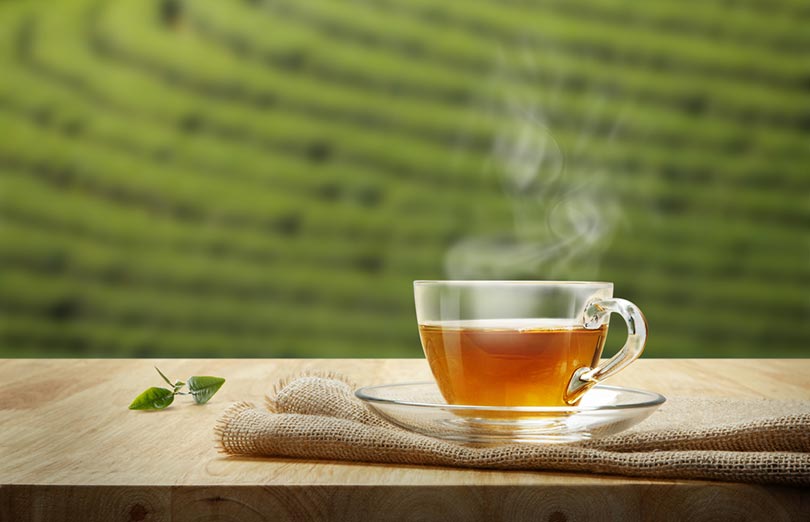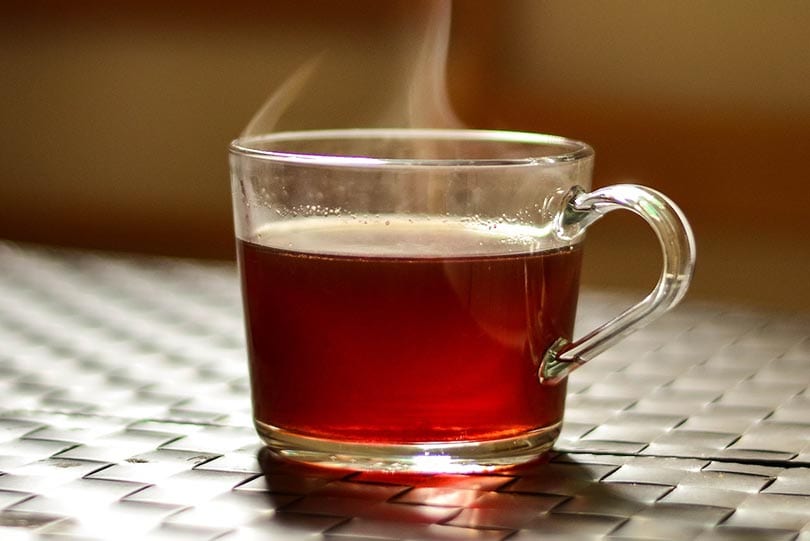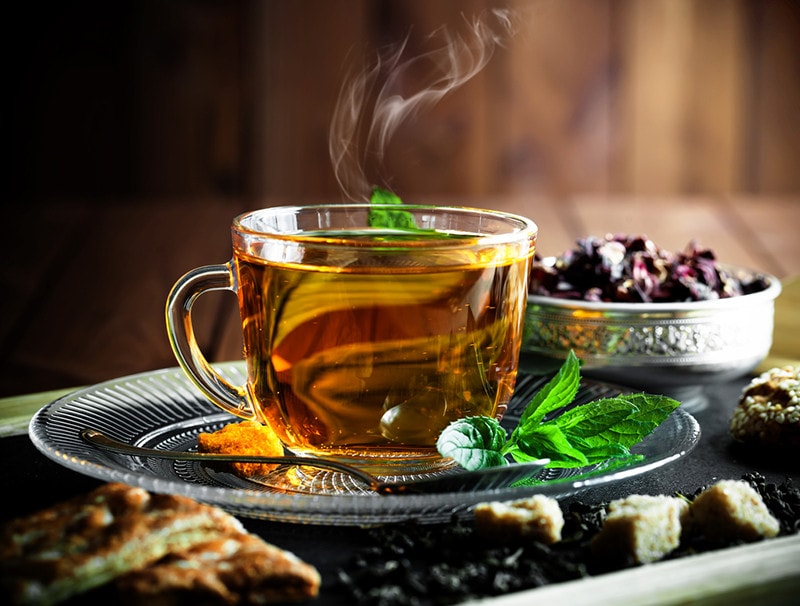
Caffeine is a powerful ingredient that can have several side effects for people that are sensitive to it. It can also interact with several medications, possibly creating a dangerous situation. However, many people rely on tea each morning to start the day, so quitting is not always easy. Some people wonder if switching to decaf tea will solve their problems. Unfortunately, there is still caffeine in decaffeinated tea, so you must be careful about how much you consume if you have a strict limit. Keep reading as we look at how much caffeine is in a cup of decaffeinated tea to help you be better informed and avoid health problems. The short answer is that a cup of black tea has about 2 to 5 mg of caffeine, while green tea has 2 mg or less.

How Much Caffeine Is in Decaf Tea?
The amount of caffeine in decaf tea can vary depending on the type and brand that you consume. However, a standard 8-ounce cup of decaf black tea usually contains 2–5 mg of caffeine, while the same amount of green tea can have 2 mg or less.

What Affects Caffeine Content in Decaf Tea?
Water Temperature
Water temperature will affect how much caffeine ends up in your cup. For example, water at a higher temperature will extract more caffeine from the tea leaf than cooler water.
Steep Time
The longer you allow the tea leaves to sit in hot water, the more caffeine the cup will contain. If you want to limit the amount of caffeine that you consume, remove the tea bag as soon as possible.
How Is Tea Decaffeinated?
Methylene Chloride
Some tea manufacturers will soak their leaves in methylene chloride, which binds to the caffeine molecules to remove them. However, though it is effective at removing caffeine while retaining the original flavor, it is illegal in many countries.
Ethyl Acetate
Removing caffeine with ethyl acetate is similar to methylene chloride. The manufacturer soaks the leaves in a solution of the chemical. However, ethyl acetate is a natural ingredient that you can find in ripening fruit, so many people prefer it over other options.
Carbon Dioxide
Many manufacturers remove caffeine by pressure cooking the leaves with carbon dioxide, which attracts the caffeine molecules and pulls them from the leaves.
Water
Water processing is a popular method for decaffeinating coffee, and it can also be used for tea. It involves a carbon filter that traps the caffeine compounds to remove them from the tea. However, many people complain that the resulting beverage tastes watered down.

Are There Side Effects to Drinking Decaf Tea?
The primary side effect of drinking decaf tea is that many people assume that it doesn’t have any caffeine at all and consume too much, which can get them into trouble if their doctor has them on a very strict caffeine restriction. Decaffeinating the tea might also remove a tiny amount of the helpful antioxidants in the tea.

How Much Caffeine Does a Regular Cup of Tea Have?
A standard 8-ounce cup of brewed black tea usually contains about 47 mg of caffeine; green tea usually has about 28 mg. However, hotter water and longer steep times may increase the caffeine content.
How Much Caffeine Is in a Regular Cup of Coffee?
Coffee contains considerably more caffeine than tea, and a typical morning cup of coffee will have between 90 mg and 140 mg of caffeine. A dark roast can have even more, and espresso can contain 64 mg in a single 1-ounce shot.
Other Options
If reducing your caffeine intake to a few milligrams per cup is not enough, caffeine-free options are available. Many nighttime teas, like chamomile, ginger, and mint, don’t contain any caffeine and provide a great way to relax with a great-tasting warm beverage without risking your health.

Summary
The decaffeinated process that most manufacturers use will reduce the amount of caffeine in your cup to 2–5 mg, which is lower than the 47 mg in regular tea and substantially less than coffee, which can contain 140 mg or more. However, if you must eliminate the caffeine from your diet completely, you’ll need to switch to a caffeine-free tea, like chamomile or mint, to protect your health.
Featured Image Credit: DONOT6_STUDIO, Shutterstock















